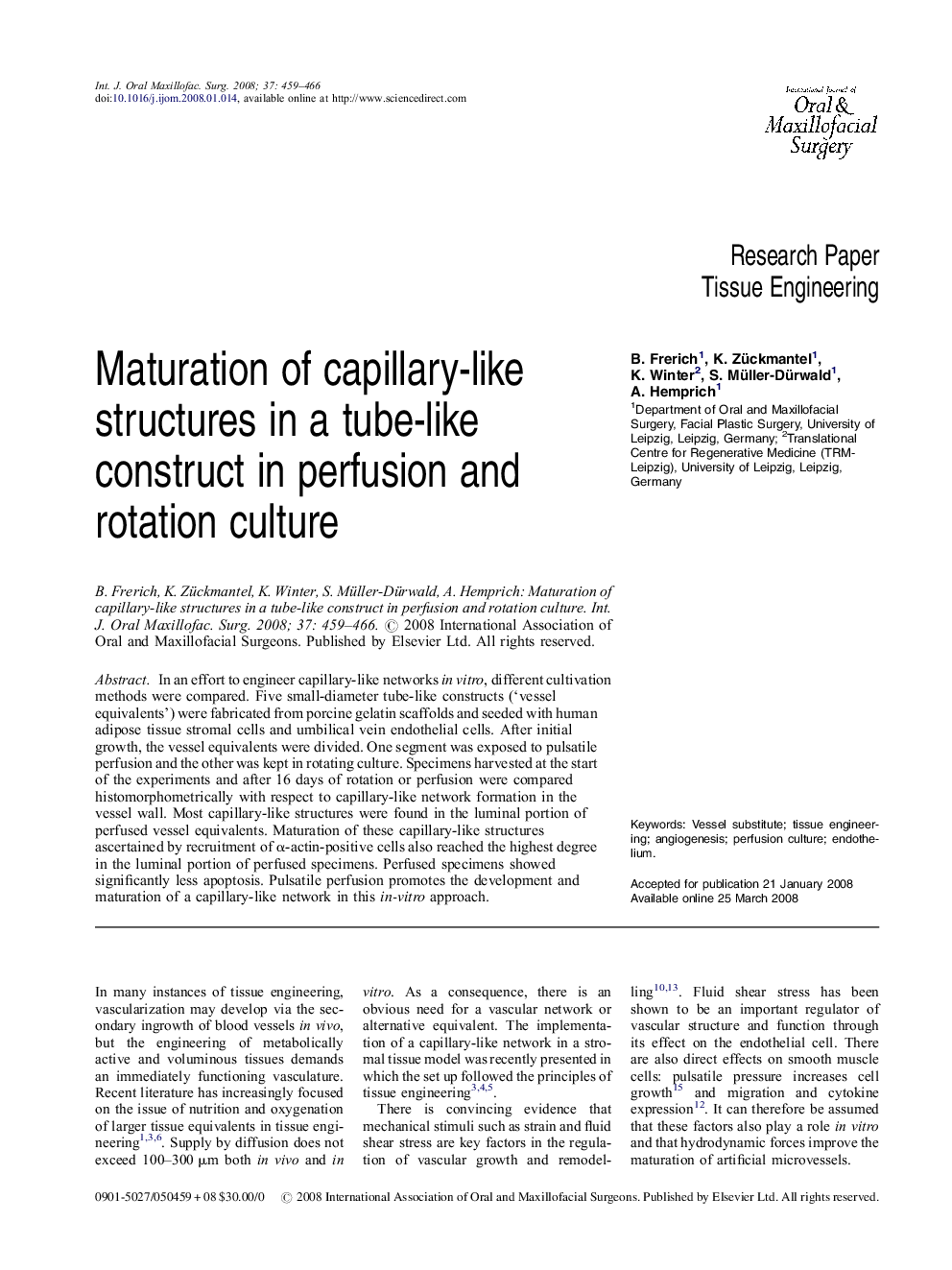| Article ID | Journal | Published Year | Pages | File Type |
|---|---|---|---|---|
| 3134723 | International Journal of Oral and Maxillofacial Surgery | 2008 | 8 Pages |
Abstract
In an effort to engineer capillary-like networks in vitro, different cultivation methods were compared. Five small-diameter tube-like constructs ('vessel equivalents') were fabricated from porcine gelatin scaffolds and seeded with human adipose tissue stromal cells and umbilical vein endothelial cells. After initial growth, the vessel equivalents were divided. One segment was exposed to pulsatile perfusion and the other was kept in rotating culture. Specimens harvested at the start of the experiments and after 16 days of rotation or perfusion were compared histomorphometrically with respect to capillary-like network formation in the vessel wall. Most capillary-like structures were found in the luminal portion of perfused vessel equivalents. Maturation of these capillary-like structures ascertained by recruitment of α-actin-positive cells also reached the highest degree in the luminal portion of perfused specimens. Perfused specimens showed significantly less apoptosis. Pulsatile perfusion promotes the development and maturation of a capillary-like network in this in-vitro approach.
Related Topics
Health Sciences
Medicine and Dentistry
Dentistry, Oral Surgery and Medicine
Authors
B. Frerich, K. Zückmantel, K. Winter, S. Müller-Dürwald, A. Hemprich,
